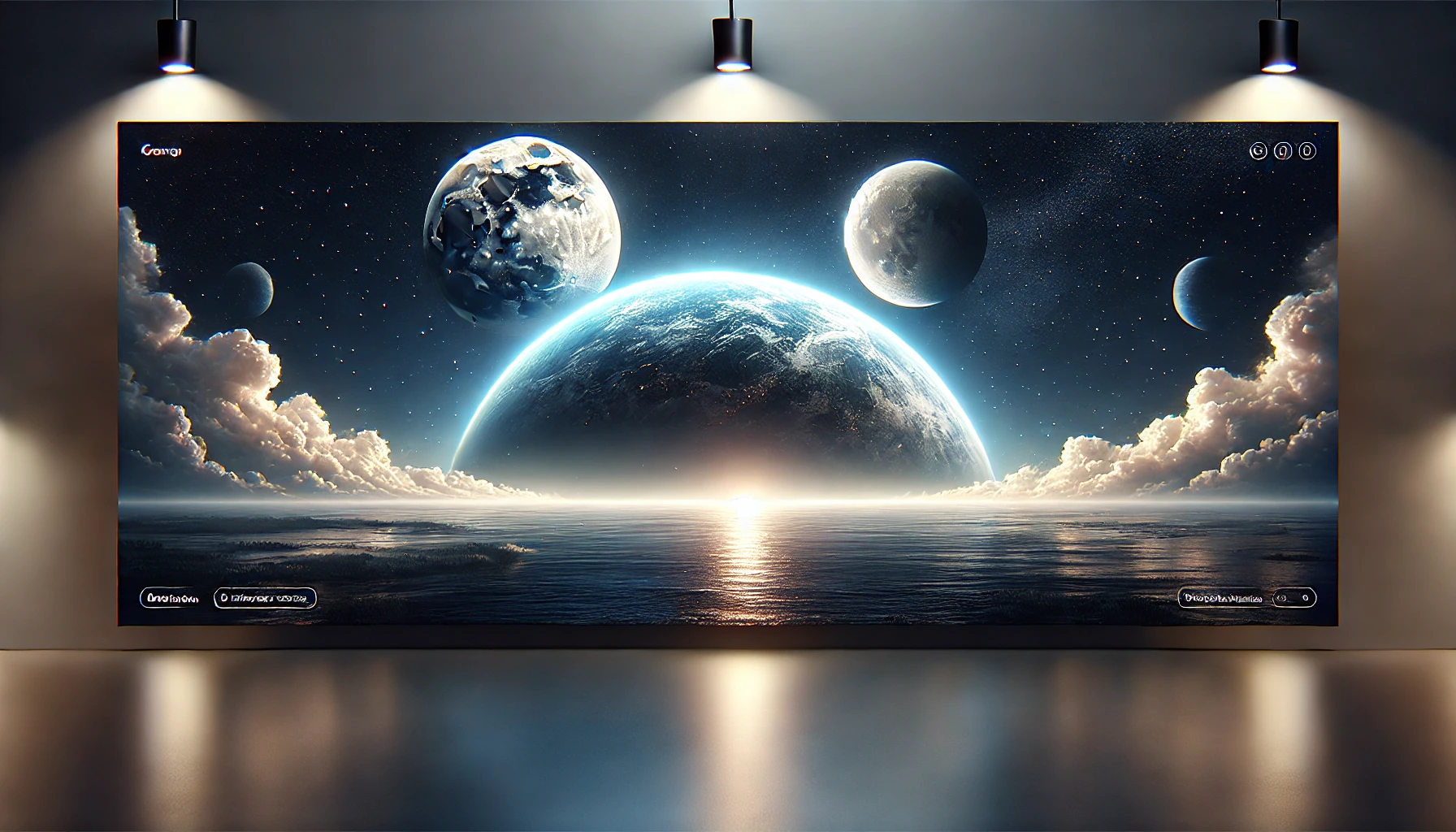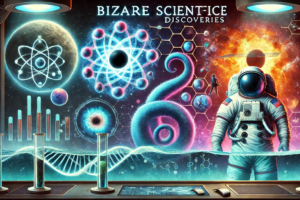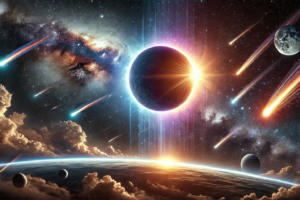What If Earth Had Two Moons? Exploring the Potential Impact on Tides, Gravity, and Life
The thought of Earth having two moons has intrigued scientists, science fiction writers, and curious minds for decades. But what if this wasn’t just an imaginative exercise? What if Earth actually had two moons orbiting it? From the tides and gravity to life as we know it, adding a second moon to Earth’s skies would have profound consequences.
In this blog, we’ll delve into the hypothetical scenario of Earth with two moons, consider the scientific possibilities of two moons orbiting Earth, and explore what temporary second moons of Earth could mean for the future. By the end, you’ll have a deeper understanding of how this change could transform everything from our oceans to our calendars.
What If Earth Had Two Moons? A Hypothetical Scenario
To start, let’s tackle the most important question: What if Earth had two moons? To imagine this scenario, we first need to understand how Earth’s single moon affects life. The moon plays a vital role in stabilizing Earth’s axial tilt, which helps maintain a relatively stable climate. It also drives the tides by pulling on Earth’s oceans through its gravitational force.
Now, what would happen if there were two moons? Let’s assume that Earth gains a second moon of similar size and distance to our current one. The two moons would exert competing gravitational forces, which would have significant effects on several aspects of Earth’s environment.
Gravitational Interference and Orbiting Changes
In this hypothetical Earth with two moons, the gravitational pull exerted by both moons could cause substantial changes in Earth’s orbital dynamics. How would two moons affect Earth? For one, the moons’ gravitational pulls might interfere with one another. This could result in changes to their orbital paths, leading to potential collisions or dramatic shifts in their distance from Earth.
Over time, these gravitational interactions could destabilize Earth’s axial tilt, potentially leading to severe climate changes. If both moons pulled on Earth in different directions, they could alter its rotational speed, which might lengthen or shorten days.
Ocean Tides: Twice the Drama
When considering what happens if Earth gets a second moon, one of the most immediate impacts would be on the tides. Right now, Earth’s tides are largely controlled by the moon’s gravitational pull. The impact of two moons on Earth’s tides would be dramatic.
With two moons pulling on the oceans, tidal forces would intensify. In areas where the gravitational pull of both moons aligns, we would see exceptionally high tides. On the other hand, where the moons’ forces work against each other, the tides could flatten out or behave erratically. Coastal regions could experience more extreme flooding, making life near the shores far more precarious.
Could Earth Actually Have Two Moons?
Before we get too caught up in the science fiction of it all, it’s important to note that Earth can, and occasionally does, capture a temporary second moon. This has happened in the past with small asteroids. These bodies are known as “mini-moons” or quasi-satellites, and they orbit Earth for a short period before breaking away due to gravitational interactions.
In fact, in 2020, a small asteroid named 2020 CD3 orbited Earth for a few months, acting as a temporary second moon before drifting away. Though these objects are much smaller than the moon, they illustrate that two moons orbiting Earth, even temporarily, is possible.
Earth’s Second Moon in 2024?
Interestingly, there are predictions that a second moon of Earth could be observed in the near future, potentially by 2024. Scientists continue to monitor space for such small bodies that might enter Earth’s orbit. These temporary second moons of Earth are typically captured for a few months before the gravitational pull of the Sun causes them to drift away again. While their influence is minor compared to our primary moon, they offer exciting opportunities for study.
The idea of a second, even temporary, moon sparks curiosity about how Earth would change if we ever had another moon consistently in our sky.
The Scientific Possibilities of Two Moons Orbiting Earth
For now, permanent two moons orbiting Earth remains a theoretical and highly unlikely event. Our moon was formed billions of years ago through a collision between Earth and a Mars-sized body. Any new object large enough to qualify as a second moon would likely disrupt the current gravitational balance, leading to unpredictable and catastrophic consequences.
Simulating the Effects of Two Moons
Scientists love to run simulations, and the idea of Earth gaining another moon is no exception. Earth two moons simulations have been conducted to study how two moons might interact with each other and with Earth. These simulations often show that two moons would not remain stable for long. The gravitational forces at play would likely cause the moons to collide, resulting in a massive amount of debris orbiting Earth.
Alternatively, one of the moons might escape Earth’s orbit entirely, leaving us once again with just one. These simulations offer valuable insights into how celestial bodies interact, even if the scenario remains largely in the realm of science fiction.
The Impact of Two Moons on Earth’s Tides and Life
Let’s not forget that adding a second moon would have consequences not just for Earth’s tides but for all life on the planet. Many animal species, particularly marine creatures, rely on the moon and its gravitational pull to regulate their behavior. From the migration of birds to the reproductive cycles of fish, these rhythms are tied to the phases of the moon.
With two moons in the sky, the carefully orchestrated dance of life might be thrown into chaos. Migratory birds might struggle to navigate, and marine life that depends on the tides could face unprecedented challenges.
The Influence on Human Life
The presence of two moons would also likely affect human life in subtle and not-so-subtle ways. The tides would become more unpredictable, affecting coastal cities and industries that rely on predictable ocean patterns. Over time, the moon’s influence on Earth’s tilt and rotation might result in shifts to the climate, with unknown consequences for agriculture and weather systems.
Human culture would also be impacted. Just imagine how two moons would change the appearance of the night sky, calendars, and even mythology. Our current 12-month lunar calendar might need an overhaul, and new stories, legends, and traditions would undoubtedly arise as we adapt to this new reality.
Two Moons and the Future
In summary, what if Earth had two moons? It’s clear that the effects would be profound. From ocean tides to gravitational forces, the addition of another moon would ripple through every facet of life on Earth. While two moons orbiting Earth may seem like a distant dream, temporary second moons give us a glimpse into what could happen if Earth ever captured a permanent lunar partner.
As scientists continue to observe space for temporary second moons of Earth, the fascination with this idea only grows. Whether it’s through simulations or real-world discoveries, the thought of a second moon continues to inspire awe and curiosity.
For more information on celestial phenomena and how they might impact life on Earth, check out resources like NASA’s Astrobiology Institute and explore educational tools at Regent Studies to stay updated on the latest discoveries.
In the end, whether Earth gains a second moon temporarily or permanently, the implications will be far-reaching—scientifically, environmentally, and culturally.




